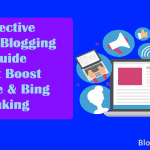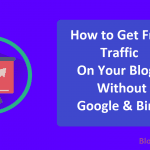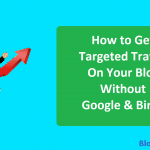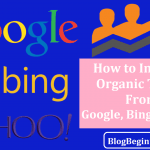Creating quality content takes a significant amount of time. No matter what your final output is — whether it is a podcast, a video, or a blog post — you will need a thorough process to ensure that it’s something that you’d be proud to own.
As we all know, great things simply cannot be rushed.
How can you ensure that your blog post is going to be engaging enough for both old and new readers?
If you are currently looking for writing routine ideas, the following steps can help you put your thoughts into your computer screen more effectively.
As these tips are fairly general, feel free to modify them to your liking.
Contents In Page
Gather Ideas
Interesting blog posts all start with a great idea. Reading regularly is one of the best ways to keep awesome ideas coming.
You don’t necessarily have to read books daily; you could be reading articles, essays, or something more manageable.
In any case, reading can give you a lot of ideas at any given moment.
Now, it’s easy to lose those ideas as quickly as you thought of them.
The moment you consider, “This could be a great post topic!” make sure that you jot it down before you forget about it.
You can go for the traditional pen and paper to store these ideas, or use technology to help you out (apps, blog drafts, etc.).
Create Outlines
Outlines will greatly help you in getting your main points across. Creating lists, subheadings, and bullets will allow you to visualize your ideas and the flow of your content.
It also makes it easier for you to see how you can logically structure your points into paragraphs.
Don’t be quick to delete your outline once you’ve published your post, though.
You can easily turn your outline into a PowerPoint presentation that you can publish on SlideShare or use on a future video.
Structure Your Post
Aesthetics play a big role in a post’s readability. Even if you actually have great content, it won’t sit well with your readers if it isn’t structured or formatted well.
For example, your readers won’t be compelled to read through your post if they are looking at a big block of text, compared to properly sliced paragraphs.
Highlighting important words by boldface, italics, or underlines will also help.
Use Images
Though it may sound superficial, adding images will make your posts more enticing for your readers.
People are likely to pass up on your post if it looks too plain. Sometimes, even your great words will not be enough to convince them to pay attention to it.
Stimulating your readers’ visual senses will definitely make them look more.
Think of Engaging Titles
When you’re done writing your post, it’s time to come up with engaging titles.
Though one title would be enough, sometimes another title can actually sound nicer than the initial one that you thought of.
This is especially helpful if you are doing A/B tests.
It may seem trivial, but A/B tests can reveal how different wordings and syntax affect your blog traffic and reader engagement.
Proofread and Edit Your Work
Before you hit that “Publish” button, make sure that you go over your work once, twice, or even thrice.
Straighten out the creases, polish the details, and add/remove points as you deem fit. If you can have it looked at and edited by someone else, that would be great.
They may be able to see things that you have overlooked.
Make sure that you don’t keep on repeating the same idea in different paragraphs.
During editing, feel free to read the post out loud to confirm the flow of words. Try to shorten sentences and avoid lengthy paragraphs.
Remove unnecessary words that don’t add any value to your posts and don’t beat around the bush.
Understand your audience
To create effective blog posts, you must target a certain group of people.
Know the target audience so that you can deliver to them relevant content that they want to hear. As you write content for the audience, you need to make some crucial decisions based on competitor analysis and industry research.
Multiple resources online can help you identify popular keywords that users search in the industry.
You can use tools to not only find your target audience but also identify your competitors in the field and borrow some of their ideas.
Conduct proper research and know facts
No blogger knows everything. Every single day is a chance for you to learn something new that you can include in your blog posts.
This can only come if you take your time in conducting research before you sit down to write. Go through various articles and other people’s blogs that are related to your niche and grasp new things which can add value to your posts.
Make sure that you select authoritative sources such as government websites to find facts and avoid giving people outdated information.
Confirm facts before including them in your articles to avoid giving inaccurate details. This can save you from criticism in the comment section and help you get quality traffic over time.
Use SEO optimization
Have in mind SEO as you write each blog post. Organic search drives a lot of traffic for websites.
Try to maximize your SEO ranking by including things such as meta description, and meta title in your blog posts.
Make use of related keyword variation and add the relevant keyword to make it easy for your audience to find your posts.
You should, however, avoid obsessing over the number of keywords you need to include in your posts.
Try to make your URL keyword-friendly and short. Make sure that your site is responsive to mobile devices. Mobile optimization is crucial since many readers love accessing posts from their small screens while they are on the move.
A mobile-friendly site can easily get more traffic compared to one that is not.
Include a call to action (CTA)
Whether you are a business or fashion blogger, you should never end your posts without including a call-to-action phrase.
For instance, you can finish your post by asking readers to give their views in the comment section or ask them to share your posts with others.
If you are promoting a product, you can ask them to purchase it or follow your posts on social media similar products.
Use a clear CTA and make it stand out in your blog post. When a reader clicks on the call to action, it can generate leads. You should make use of the CTA to provide additional content that is similar to the post the reader is on.
Writing effective blog posts takes a lot of practice. Rarely do bloggers get it perfect on their first few tries.
But as long as you’re open to feedback, you will be able to come up with a writing process that personally works for you.








